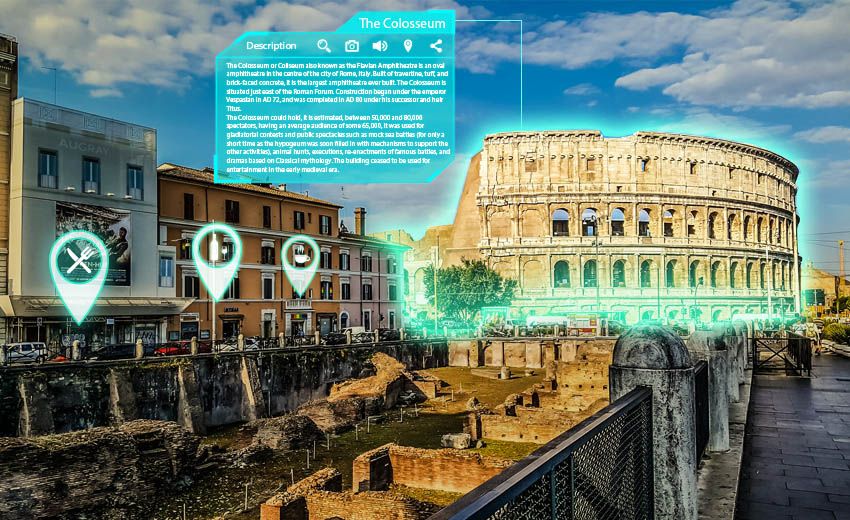The Role of Data Annotation in the Development of AR Applications
AR applications are starting to become increasingly popular because of the wide range of applications and the increased levels of interaction with the users. In fact, the augmented reality market is expected to grow from $7.6 billion in 2020 to $29.5 billion in 2025. This is a CAGR of 31.1%. Even though the AR industry is rapidly growing, a lot of data annotation is required to create such AR apps, which means that the data annotation market will need to keep up with growing demand. Today we will share with you some of the use cases for AR applications and the data annotation that is required to create them.
AR for Tourism
Wherever you go sightseeing in a new city, there are usually many interesting buildings, historical sites, statues, and other attractions. In order to get the full experience of visiting the city you need to be able to walk around without missing out on any of the attractions, but it must be convenient for you as well. This is where AR applications come in handy since all you will have to do is point your smartphone at the object of interest and you will be able to get information about it in real-time. Also, if you get lost while walking around, the AR application can open up a 3D map that will guide you to your destination step-by-step.
Essentially, such an AR application relies on object detection and recognition which require data annotation methods such as 2D/3D box annotation as well as polygon annotation since a lot of the objects may not fit in neatly into rectangular boxes. While polygon annotation is more accurate, it is also more time-consuming. However, this is how researchers train the AI and machine system to recognize all of the objects you may encounter on your journey and this process is still going on to make the applications more accurate.

AR for Museums and Art Galleries
While Museums and art galleries usually give you some essential information about the objects in the exhibit or the paintings on display, this information is usually very limited and does not allow you to truly experience its historical significance. For example, the Smithsonian Institution in Washington, D.C is using AR technology to bring a whole new dimension to one of its oldest and most loved displays. Many of the skeletons in the museum’s Bone Hall have been on the show since 1881. Now visitors can download a new app called Skin and Bone which shows these pieces in a new light.
13 skeletons feature in the app, which superimposes images to reconstruct the creatures. Users can see how skin and muscle would have looked over the bones, and how the animals would have moved. This gives them a unique glimpse into the history of the pieces and helps to bring the display to life. Visitors can use the app to see a vampire bat take flight, or an anhinga demonstrating how it would have fished.
While such an AR application would still require object detection and recognition capabilities, an even more accurate method of data annotation is required called semantic segmentation. This involves labeling each pixel of an image with a corresponding class. During the annotation process, strict QA processes need to be observed because the slightest deviation could cause significant inaccuracies in the way the object appears to the users. As you can imagine, this is a very time-consuming process, which is why a lot of companies choose to outsource such data annotation work.

AR Gaming
Augmented reality allows us to seamlessly insert virtual objects in an image sequence. However, it is important that synthetic elements are rendered and aligned in the scene in an accurate and visually acceptable way. For example, if we think back to Pokemon Go all of the characters need to be juxtaposed onto the physical world in a particular position. This is where pose estimation. How does this work? Well, human data annotators would need to place various keypoints and lines along the training dataset to make sure the characters are displayed in the real world exactly right.

Trust Mindy Support to Annotate Your AR Training Dataset
As we have seen from the examples mentioned above, data annotation plays a key role in the development of AR applications. However, quality is key because the object rendered in the physical world needs to look realistic. This is why a lot of companies trust Mindy Support with their data annotation needs since we have strict QA processes in place and we get the job done right the first time, thus helping you keep the project on schedule. Contact us to learn more about how we can help you.





